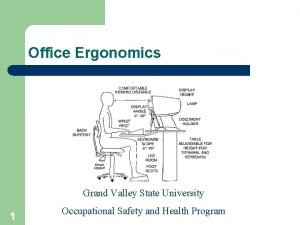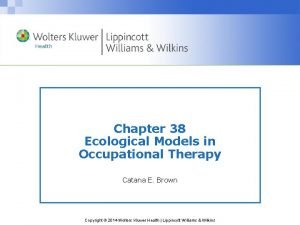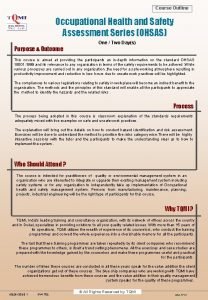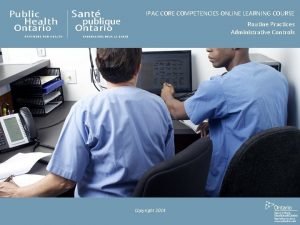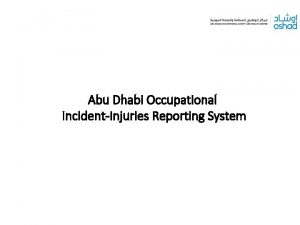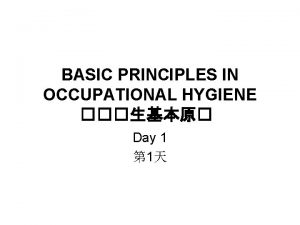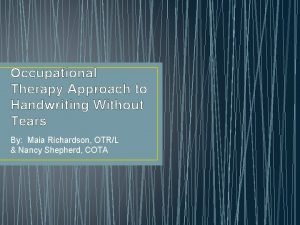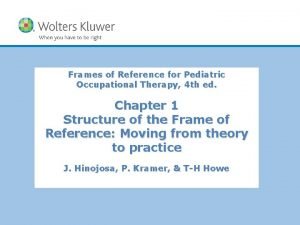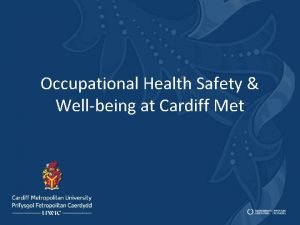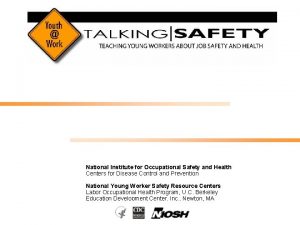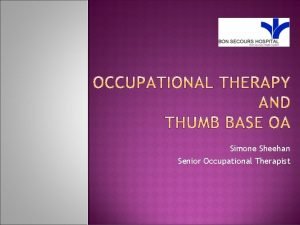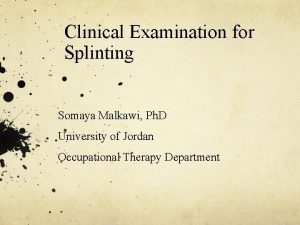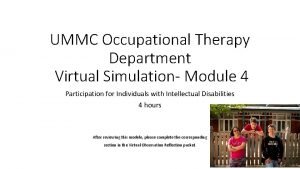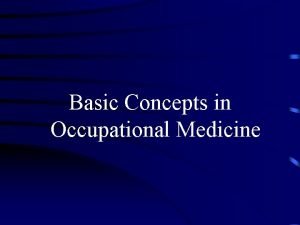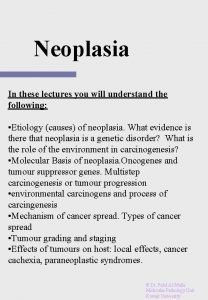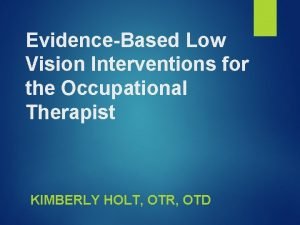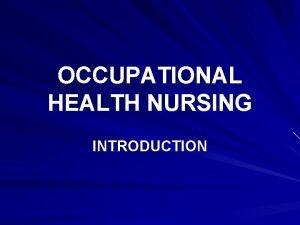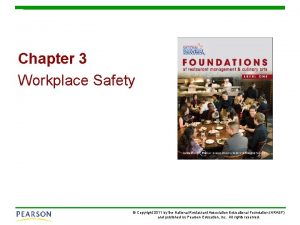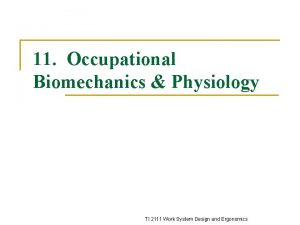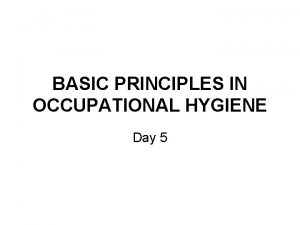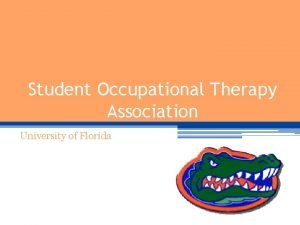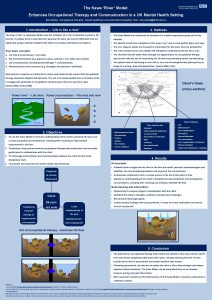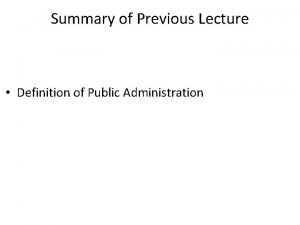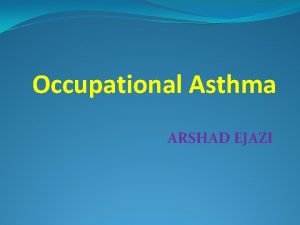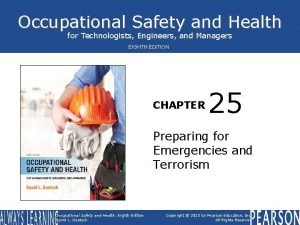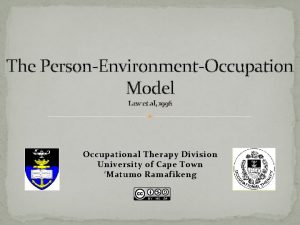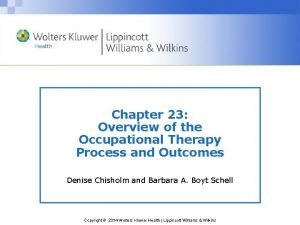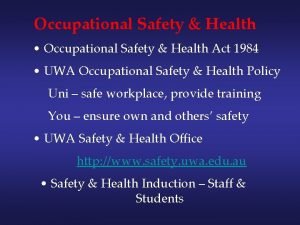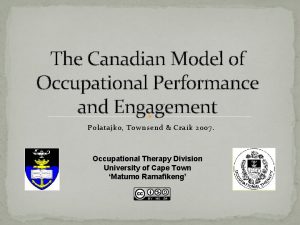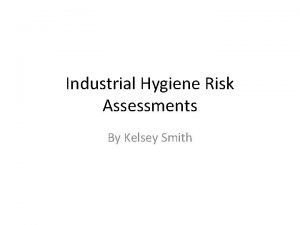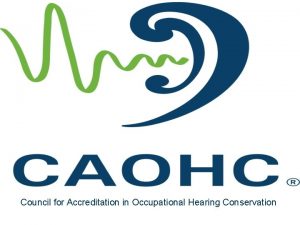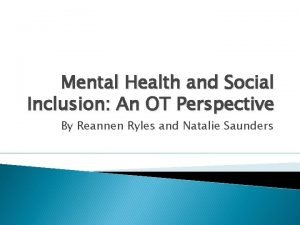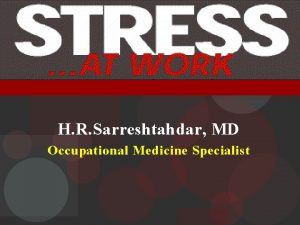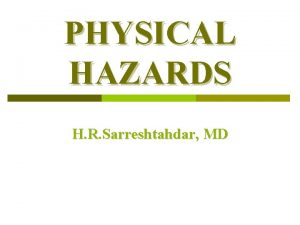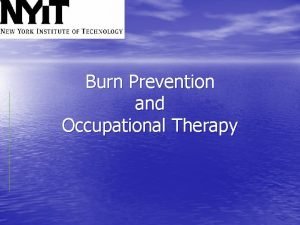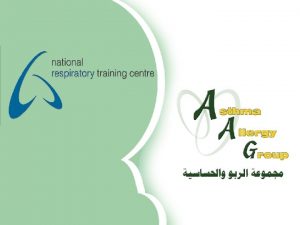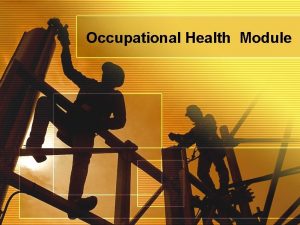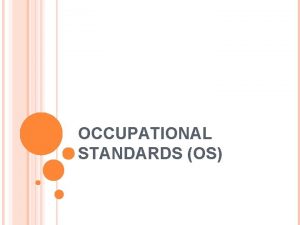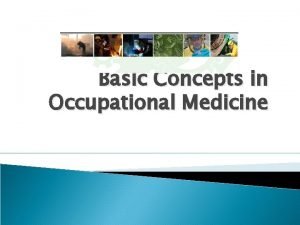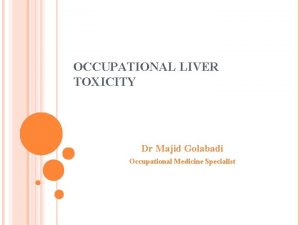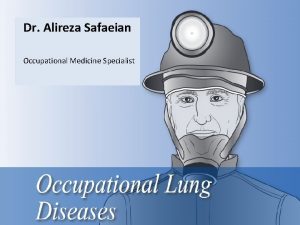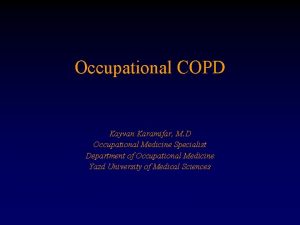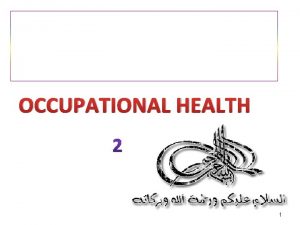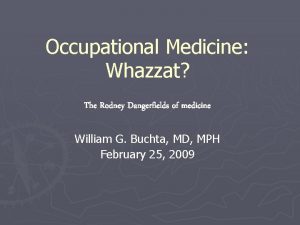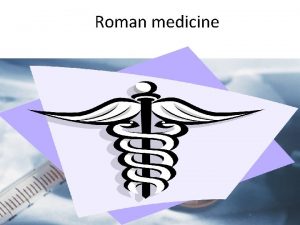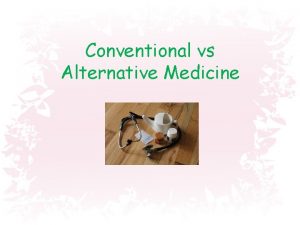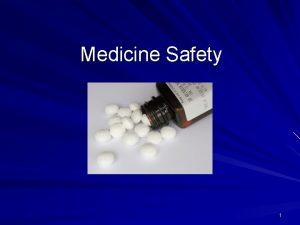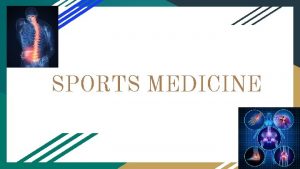OCCUPATIONAL MEDICINE H R Sarreshtahdar MD Occupational Medicine








































- Slides: 40

OCCUPATIONAL MEDICINE H. R. Sarreshtahdar, MD Occupational Medicine Specialist

Job Human History

Medical History Lucretius Ramazzini Pliny Paracelsus Hamilton

Occupational Health WHO more than 100, 000 occupational disorders annually ILO more than 50% workers work in unacceptable workplace

Occupational Health Ø The promotion and maintenance of the highest degree of physical, mental and social well being of workers in all occupations Ø Fitness for work

OEM Mission Occupational and environmental medicine is the medical specialty devoted to prevention and management of occupational and environmental injury, illness, and disability; and promotion of health and productivity of workers, their families, and communities.


Occupational Health In 1970, Congress passed the Occupational Safety and Health Act (OSH Act), creating the: q Occupational Safety and Health Administration (OSHA) q National Institute for Occupational Safety and Health (NIOSH)

What Sciences Help Occupational Medicine ? üMedicine üStatistic & epidemiology üManagement üEducation & training üLaw & legal medicine üCommunication

Occupational Health Team o Occupational physician o Industrial hygienist o Occupational nurse o Ergonomist o Safety technician

Occupational Health System Management Occupational Medicine Industrial Hygiene & Safety Employees

Occupational Disorders Ø INJURIES Ø DISEASE Occupational disease Work related disease Work aggravated disease

Occupational Disease • No treatment • Preventable • Chronic • Impairment & disability • Co-workers involvement • High cost

Impact of Health on Productivity • Absenteeism and Presenteeism

Occupational Disease • Indistinguishable from non occupational origin • Multifactorial • Latency period • Dose response relationship • Susceptibility


Clinical Under Recognition • Inadequate knowledge • Absence specific findings • Latency • Multifactorial • Multiple Susceptibility

Hazards § Physical § Chemical § Biological § Ergonomic § Psychosocial § Other(surfaces, flammables, heights, tips)

Examples Of Occupational Disorders o Liver disease (vinyl chloride) o Bladder cancer (dyes) o Psychosis (Hg) o Raynaud’s phenomenon (vibration) o Rales, wheezes, … (allergens)

Prevention Levels Primary Secondary Tertiary

Primary Prevention Medical o Pre-placement and fitness for work evaluations o Screening programs (for other workers) and biologic monitoring o Advising the employer and employee regarding the seriousness of the hazards and availability of preventive measures

Primary Prevention Non Medical üAnticipation of health hazards üRecognition of health hazards üEvaluation of health hazards üControl of health hazards

Industrial hygiene Anticipation Recognition Evaluation Control


Secondary prevention § Designed to detect occupational injuries or illnesses at an early stage (before the worker has developed symptoms or any complications) ØOccupational surveillance

Surveillance • Systematic evaluation of employees to monitor for the early occurrence of disease or to detect biomarker of exposure • Health surveillance Vs. hazard surveillance • Screening is a form of surveillance designed to detect early signs of workrelated diseases

Screening Ø Monitoring environmental biologic Ø Examination pre-placement periodic

Screening q. A method for detecting disease or body dysfunction before an individual would normally seek medical care. q. Screening tests are usually adminstrated to individual without current symptom, but who may be at high risk for certain adverse health outcomes

Principles of screening ü Screening test must be selective and acceptable to the population at risk ü Screening test should be valid and reliable ü Benefits overweighs the costs ü Screening tests should be non-invasive (where feasible) ü Treatment should be available and effective at the stage when the disease is diagnosed

Steps for Medical Surveillance o Risk assessment o Selection of goals and target population o Choice of testing modalities o Collection of data o Interpretation of data o Intervention o Evaluation of program

Risk assessment Ø Do certain workers need special tests? Ø For performing this step, the physician should: Review work process • Industrial hygiene survey • Work-site visit Review toxicity of materials • MSDSs • Databases

Selection of goals and target population Ø Selection of goals (surveillance for what? ) Ø Selection of population: For benefit of individual workers • Screening for disease • Pre-placement evaluation • Fitness for work evaluation For benefit of groups of workers • Detection of new hazards • Assessing absence patterns

Choosing Testing Modality o Questionnaires ATS questionnaire for pulmonary diseases OSHA questionnaire for ergonomic exposures o Physical exam o Chest X-ray For silicosis o PFT For restrictive lung diseases o Biologic monitoring

Problems With The Application Of Tests § Limitations inherent in the laboratory itself § Strategies for obtaining tests § Interpretation of normal and abnormal results

Data collection ü Occupational disease asthma ü Exposure indicators blood lead level ü Possible physiologic effect spirometry ü Markers of personal risk allergy to animal proteins ü Indications of possible early disease Β 2 microglobulin in urine of Cd workers

Tertiary prevention § Clinical management of workers who are injured or ill and appropriate rehabilitation In order to üMaximize worker’s capacity üMinimize the effects of disease üImprove long-term outcome

Impairment Ø An alternation in health status which is evaluate by medical means Ø A loss, loss of use, or dearrangement of any body part, organ system or function

Disability Ø Include not only impairment but how that impairment affects a person”s ability to meet demands of life Ø Alternation of an individual’s capacity to meet personal, social, or occupational demands because of an impairment

Fitness for Work Evaluation o Pre-placement o Return to work o Provide reasonable accommodations o Return to a temporary modified duty o Place the worker in a permanent modified position o Medically terminate the employee

 Grand valley state university occupational therapy
Grand valley state university occupational therapy Ecology of human performance model
Ecology of human performance model Occupational crime in engineering ethics ppt
Occupational crime in engineering ethics ppt Scope moho
Scope moho Occupational health and safety course outline
Occupational health and safety course outline Ipac course online
Ipac course online Abu dhabi occupational health
Abu dhabi occupational health Basic principles of occupational hygiene
Basic principles of occupational hygiene Handwriting without tears occupational therapy
Handwriting without tears occupational therapy Occupational therapty
Occupational therapty Pediatric occupational therapy frames of reference
Pediatric occupational therapy frames of reference Occupational health cardiff
Occupational health cardiff Occupational safety and health
Occupational safety and health Types of grips
Types of grips Boley gauge occupational therapy
Boley gauge occupational therapy Ummc occupational therapy program
Ummc occupational therapy program Aims and objectives of occupational health
Aims and objectives of occupational health Cancer agents
Cancer agents Alert program occupational therapy
Alert program occupational therapy Occupational therapy assessments for low vision
Occupational therapy assessments for low vision Define occupational health nursing
Define occupational health nursing Which osha document summarizes occupational injuries
Which osha document summarizes occupational injuries Occupational profile example
Occupational profile example Occupational biomechanics examples
Occupational biomechanics examples Principles of occupational hygiene
Principles of occupational hygiene University of florida occupational therapy
University of florida occupational therapy Kawa river model occupational therapy
Kawa river model occupational therapy Stanford ohc
Stanford ohc Bona fide occupational requirement
Bona fide occupational requirement Public personnel administration
Public personnel administration Dr arshad ejazi
Dr arshad ejazi Occupational safety and health
Occupational safety and health Peo framework occupational therapy
Peo framework occupational therapy The ot process
The ot process Occupational safety and health act 1984
Occupational safety and health act 1984 Cmope model
Cmope model Industrial hygiene risk assessment
Industrial hygiene risk assessment Royal college of occupational therapists
Royal college of occupational therapists Caohc certification courses
Caohc certification courses Fall prevention occupational therapy
Fall prevention occupational therapy Peo model
Peo model
